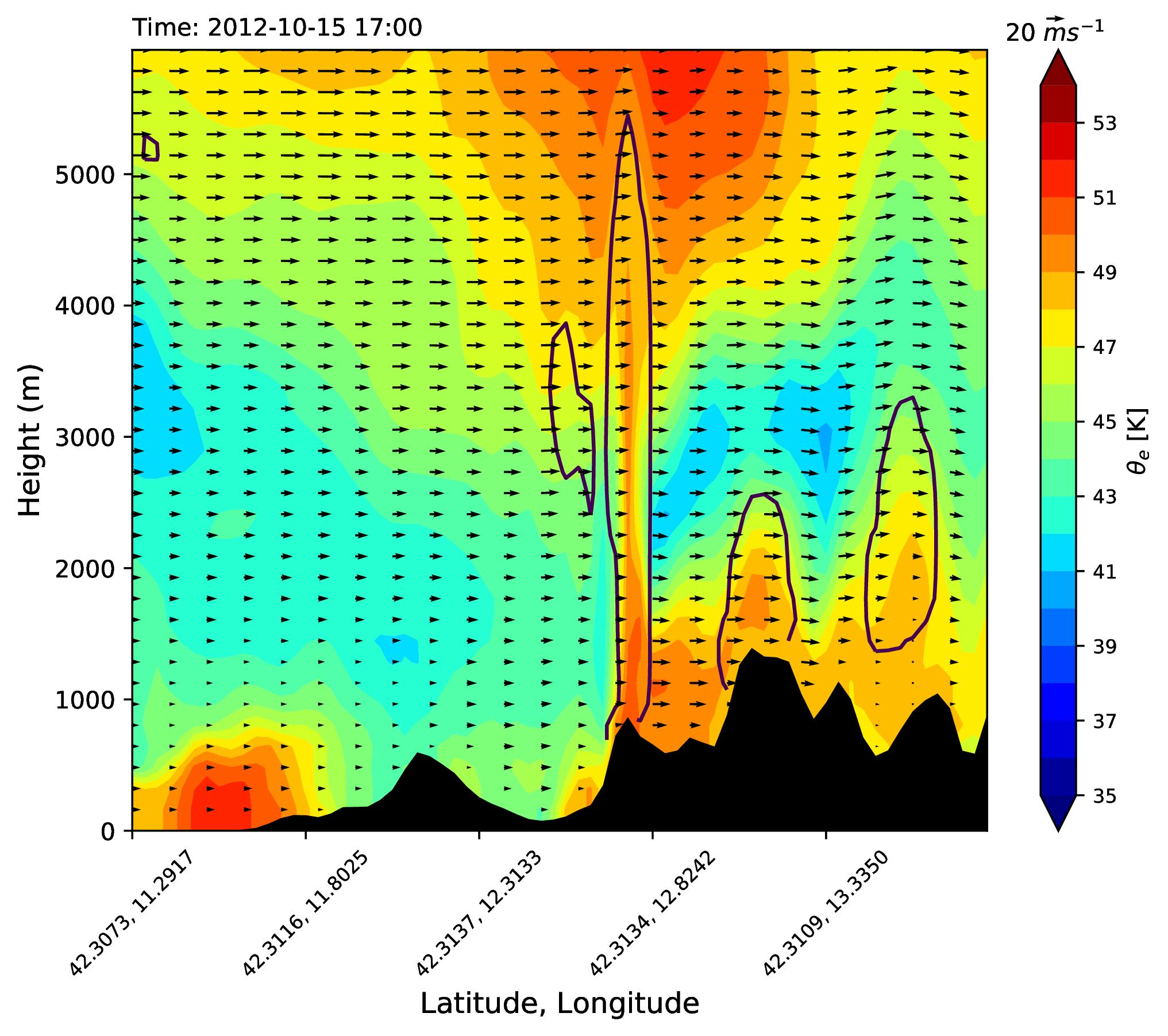Rainfall predictability in radiative-convective equilibrium states
Radiative-Convective equilibrium states (RCE) are examples of statistical equilibrium states of a convective atmosphere. We use mainly three Convective Resolving Models (CRM) in order to study such statistically stable state of convection:
- the Advanced Regional Prediction System, ARPS (http://www.caps.ou.edu/ARPS/);
- the System of Atmospheric Modeling, SAM (http://rossby.msrc.sunysb.edu/~marat/SAM.html).
- the Weather Research and Forecasting model, WRF (https://www.mmm.ucar.edu/weather-research-and-forecasting-model).
Such models are used to perform idealized experiments on the development and structural organization of convection in environments at radiative-convective equilibrium. These idealized experiments are modeled, as other similar experiments to study the aggregation of convection and its variability. The aim of these experiments, while studying the robustness of the statistical states of equilibrium given the different prognostic variables used by the models, is to assess the sensitivity to different physical parameterizations for turbulent fluxes, mixing and radiation used as model forcing to simulate the effect of moisture and temperature on the convection dynamics and the subsequent precipitation fields.
The influence of orography on rainfall variability
The orographic control of precipitation is associated with both dynamic and thermodynamic mechanisms responsible for rainfall enhancement in the presence of mountains. First, we use observations in order to assess the orographic control of precipitation particularly in Central Italy, where rainfall variability is strongly influenced by the presence of Apennines mountains. Second, we use high-resolution models (SAM, ARPS, WRF) with both idealized and real terrain configurations in order to investigate the role of orography on the dynamics of convective precipitation.
Atmospheric modeling and weather forecasts in Central Italy
We use high resolution models in order to study real cases of particular and extreme weather events in Central Italy. This is made in collaboration with CETEMPS (Center of Excellence Telesensing of Environment and Model Prediction of Severe events, http://cetemps.aquila.infn.it/) and thanks to the data and high-performance computing resources made available by the ECMWF (European Centre for Medium-Range Weather Forecasts, https://www.ecmwf.int/) and by the computing facilities of the Civil and Environmental Engineering Department (DICA) of University of Perugia.



